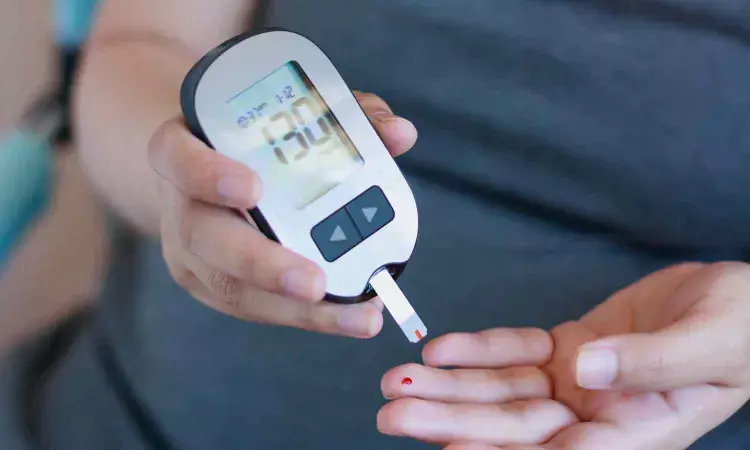- Home
- Medical news & Guidelines
- Anesthesiology
- Cardiology and CTVS
- Critical Care
- Dentistry
- Dermatology
- Diabetes and Endocrinology
- ENT
- Gastroenterology
- Medicine
- Nephrology
- Neurology
- Obstretics-Gynaecology
- Oncology
- Ophthalmology
- Orthopaedics
- Pediatrics-Neonatology
- Psychiatry
- Pulmonology
- Radiology
- Surgery
- Urology
- Laboratory Medicine
- Diet
- Nursing
- Paramedical
- Physiotherapy
- Health news
- Fact Check
- Bone Health Fact Check
- Brain Health Fact Check
- Cancer Related Fact Check
- Child Care Fact Check
- Dental and oral health fact check
- Diabetes and metabolic health fact check
- Diet and Nutrition Fact Check
- Eye and ENT Care Fact Check
- Fitness fact check
- Gut health fact check
- Heart health fact check
- Kidney health fact check
- Medical education fact check
- Men's health fact check
- Respiratory fact check
- Skin and hair care fact check
- Vaccine and Immunization fact check
- Women's health fact check
- AYUSH
- State News
- Andaman and Nicobar Islands
- Andhra Pradesh
- Arunachal Pradesh
- Assam
- Bihar
- Chandigarh
- Chattisgarh
- Dadra and Nagar Haveli
- Daman and Diu
- Delhi
- Goa
- Gujarat
- Haryana
- Himachal Pradesh
- Jammu & Kashmir
- Jharkhand
- Karnataka
- Kerala
- Ladakh
- Lakshadweep
- Madhya Pradesh
- Maharashtra
- Manipur
- Meghalaya
- Mizoram
- Nagaland
- Odisha
- Puducherry
- Punjab
- Rajasthan
- Sikkim
- Tamil Nadu
- Telangana
- Tripura
- Uttar Pradesh
- Uttrakhand
- West Bengal
- Medical Education
- Industry
Bi-Directional Link Between Diabetes and Sleep Apnoea Explored in Indian Research

India: A recent review led by Dr. Viny Kantroo from Indraprastha Apollo Hospitals, New Delhi, delves into the complex bidirectional relationship between type 2 diabetes mellitus (T2DM) and obstructive sleep apnoea (OSA). These two conditions, increasingly prevalent due to common risk factors like obesity, chronic inflammation, and autonomic dysfunction, are deeply interconnected. The findings were published online in Apollo Medicine.
Dr. Kantroo's work emphasizes the importance of early screening for both conditions, urging primary care physicians to be proactive in identifying these disorders to ensure better patient outcomes.
Dr. Kantroo explains, “Our study highlights how effective blood sugar control can improve OSA symptoms, leading to reduced sleep fragmentation, lower inflammation, and better glycaemic control. This creates a positive feedback loop that benefits both conditions.” The review suggests that improving one disorder can positively impact the other, particularly when managing blood sugar levels optimally.
A key finding of the study is the role of Continuous Positive Airway Pressure (CPAP) therapy in enhancing insulin sensitivity and cardiovascular health in OSA patients. While CPAP’s direct effect on glycaemic control remains inconsistent, its benefits in improving overall health, including reducing the Apnoea-Hypopnoea Index (AHI), are clear.
The study also explores the potential of newer anti-obesity medications. These treatments not only address obesity but may also reduce OSA severity and improve metabolic health. "These medications are showing promise in tackling both OSA and T2DM simultaneously by addressing the underlying obesity and its metabolic consequences," adds Dr. Kantroo.
In response to a question about the unique contribution of her research, Dr. Kantroo shared the following insight:
"The unique contribution of this study lies in its crisp and easily understandable language, which allows even non-specialists to grasp the core message. This helps decentralize care, ensuring that patients receive timely attention and do not present in advanced stages of either condition. Ultimately, this can aid in preventing complications associated with the progression of both disorders."
However, Dr. Kantroo acknowledges the study's limitations. “The paper does not provide a detailed account of the pathogenesis or the common genetic mechanisms involved in the development of both conditions,” she notes. Instead, it offers an overview of the shared risk factors and provides practical tips for managing patients with both disorders. This approach makes the research accessible to non-specialists, helping to decentralize care and prevent complications associated with the advanced stages of both T2DM and OSA.
The researchers stress that the review advocates for a more personalized approach to treating individuals with both T2DM and OSA. They note that while the research does not delve deeply into the molecular mechanisms of these disorders, it serves as a vital reminder to healthcare providers about the importance of early intervention. By better managing these coexisting conditions, long-term outcomes can be significantly improved for patients. Ongoing research into more effective treatments will help optimize care for these patients and reduce the risks associated with both diseases.
Reference:
Kantroo, V., Bhattacharya, S., Attri, B., Chopra, A., & Kalra, S. Diabetes and Obstructive Sleep Apnoea: Exploring the Bi-directional Link. Apollo Medicine.
Dr Kamal Kant Kohli-MBBS, DTCD- a chest specialist with more than 30 years of practice and a flair for writing clinical articles, Dr Kamal Kant Kohli joined Medical Dialogues as a Chief Editor of Medical News. Besides writing articles, as an editor, he proofreads and verifies all the medical content published on Medical Dialogues including those coming from journals, studies,medical conferences,guidelines etc. Email: drkohli@medicaldialogues.in. Contact no. 011-43720751


